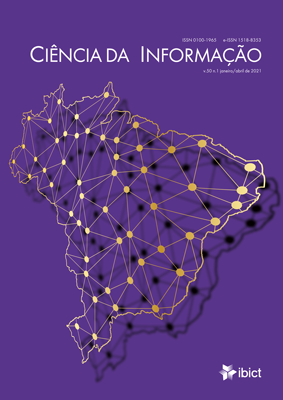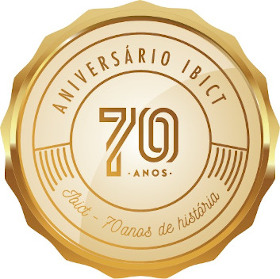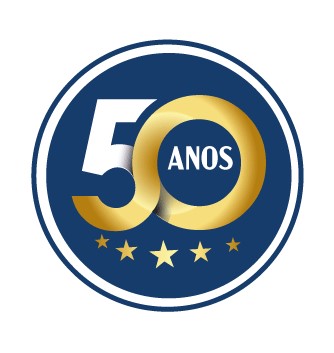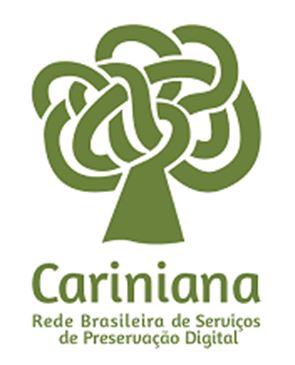The strength of international scientific ties: a novel analysis of inter-Country coautorship
DOI:
https://doi.org/10.18225/ci.inf.v50i1.5254Palavras-chave:
International cooperation, Science policy, Probabilistic affinity index, International network, Cooperation factors.Resumo
The aim of this work is to highlight the strongest inter-country scientific collaborations and the factors that drive them, also in order to offer policy suggestions. The experimental activity at its background exploits a seldom used methodology, preferred to other ones due to its features. It calculates in fact a powerful indicator, the Probabilistic Affinity Index, on the internationally coauthored scientific products of the 100 most scientifically productive Countries. The Probabilistic Affinity Index is able to measure the strength of a collaboration without being influenced by internal scientific production of a Country. Once the strength of collaboration is assessed, networks of the strongest ones are built using Network Analysis instruments. While results substantially confirm most of the past findings on factors driving scientific collaboration, they also show previously unseen strong collaboration paths existing between Countries. At the end of the paper policy suggestions are drawn.Downloads
Referências
Acosta, M., Coronado, D., Ferrándiz, E., & León, M. D. (2011). Factors affecting inter-regional academic scientific collaboration within Europe: the role of economic distance. Scientometrics, 87(1), 63–74. https://doi.org/10.1007/s11192-010-0305-6
Aksnes, D. W., Frølich, N., & Slipersæter, S. (2008). Science policy and the driving forces behind the internationalisation of science: The case of Norway. Science and Public Policy, 35(6), 445–457. https://doi.org/10.3152/030234208X331236
Barrios, C., Flores, E., Martínez, M. Á., & Ruiz-Martínez, M. (2019). Is there convergence in international research collaboration? An exploration at the country level in the basic and applied science fields. Scientometrics, 120(2), 631–659. https://doi.org/10.1007/s11192-019-03133-9
Beaver, D., & Rosen, R. (1978). Studies in scientific collaboration. Scientometrics, 1(1), 65–84. https://doi.org/10.1007/BF02016840
Bergé, L. R. (2017). Network proximity in the geography of research collaboration. Papers in Regional Science, 96(4), 785–815.
Boshoff, N. (2009). Neo-colonialism and research collaboration in Central Africa. Scientometrics, 81(2), 413. https://doi.org/10.1007/s11192-008-2211-8
Cassi, L., Morrison, A., & Rabelotti, R. (2015). Proximity and Scientific Collaboration: Evidence from the Global Wine Industry. Tijdschrift voor Economische en Sociale Geografie, 106(2), 2015–219.
Choi, S. (2012). Core-periphery, new clusters, or rising stars?: international scientific collaboration among ‘advanced’ countries in the era of globalization. Scientometrics, 90(1), 25–41. https://doi.org/10.1007/s11192-011-0509-4
Choi, S., Yang, J. S., & Park, H. W. (2015). The triple helix and international collaboration in science. Journal of the Association for Information Science and Technology, 66(1), 201–212. https://doi.org/10.1002/asi.23165
de Solla Price, D. (1981). The analysis of square matrices of scientometric transactions. Scientometrics, 3(1), 55–63. https://doi.org/10.1007/BF02021864
Eblen, M., Fabsitz, R. R., Olson, J. L., Pearson, K., Pool, L. R., Puggal, M., et al. (2012). Social network analysis comparing researcher collaborations in two cardiovascular cohort studies. Research Evaluation, 21(5), 392–405. https://doi.org/10.1093/reseval/rvs030
Finardi, U. (2015). Scientific collaboration between BRICS countries. Scientometrics, 102(2), 1139–1166. https://doi.org/10.1007/s11192-014-1490-5
Finardi, U., & Buratti, A. (2016). Scientific collaboration framework of BRICS countries: an analysis of international coauthorship. Scientometrics, 109(1), 433–446. https://doi.org/10.1007/s11192-016-1927-0
Frenken, K., Hoekman, J., Kok, S., Ponds, R., van Oort, F., & van Vliet, J. (2009). Death of Distance in Science? A Gravity Approach to Research Collaboration. In A. Pyka & A. Scharnhorst (Eds.), Innovation Networks: New Approaches in Modelling and Analyzing (pp. 43–57). Berlin, Heidelberg: Springer Berlin Heidelberg. https://doi.org/10.1007/978-3-540-92267-4_3
Garner, J. G., Porter, A. L., Newman, N. C., & Crowl, T. A. (2012). Assessing research network and disciplinary engagement changes induced by an NSF program. Research Evaluation, 21(2), 89–104. https://doi.org/10.1093/reseval/rvs004
Glänzel, W., & Schubert, A. (2005a). Analysing Scientific Networks Through Co-Authorship. In H. F. Moed, W. Glänzel, & U. Schmoch (Eds.), Handbook of Quantitative Science and Technology Research: The Use of Publication and Patent Statistics in Studies of S&T Systems (pp. 257–276). Dordrecht: Springer Netherlands. https://doi.org/10.1007/1-4020-2755-9_12
Glänzel, W., & Schubert, A. (2005b). Domesticity and internationality in co-authorship, references and citations. Scientometrics, 65(3), 323–342. https://doi.org/10.1007/s11192-005-0277-0
González-Alcaide, G., Park, J., Huamaní, C., & Ramos, J. M. (2017). Dominance and leadership in research activities: Collaboration between countries of differing human development is reflected through authorship order and designation as corresponding authors in scientific publications. PLOS ONE, 12(8), e0182513. https://doi.org/10.1371/journal.pone.0182513
Hassan, S.-U., Sarwar, R., & Muazzam, A. (2016). Tapping into intra- and international collaborations of the Organization of Islamic Cooperation states across science and technology disciplines. Science and Public Policy, 43(5), 690–701. https://doi.org/10.1093/scipol/scv072
Hennemann, S., Rybski, D., & Liefner, I. (2012). The myth of global science collaboration—Collaboration patterns in epistemic communities. Journal of Informetrics, 6(2), 217–225. https://doi.org/10.1016/j.joi.2011.12.002
Hoekman, J., Frenken, K., & Tijssen, R. J. W. (2010). Research collaboration at a distance: Changing spatial patterns of scientific collaboration within Europe. Research Policy, 39(5), 662–673. https://doi.org/10.1016/j.respol.2010.01.012
Jeong, S., Choi, J. Y., & Kim, J.-Y. (2014). On the drivers of international collaboration: The impact of informal communication, motivation, and research resources. Science and Public Policy, 41(4), 520–531. https://doi.org/10.1093/scipol/sct079
Kamada, T., & Kawai, S. (1989). An algorithm for drawing general undirected graphs. Information Processing Letters, 31(1), 7–15. https://doi.org/10.1016/0020-0190(89)90102-6
Katz, J. S. (1994). Geographical proximity and scientific collaboration. Scientometrics, 31(1), 31–43. https://doi.org/10.1007/BF02018100
Kraut, R., Egido, C., & Galegher, J. (1988). Patterns of Contact and Communication in Scientific Research Collaboration. In Proceedings of the 1988 ACM Conference on Computer-supported Cooperative Work (pp. 1–12). New York, NY, USA: ACM. https://doi.org/10.1145/62266.62267
Landini, F., Malerba, F., & Mavilia, R. (2015). The structure and dynamics of networks of scientific collaborations in Northern Africa. Scientometrics, 105(3), 1787–1807. https://doi.org/10.1007/s11192-015-1635-1
Lata, R., Scherngell, T., & Brenner, T. (2015). Integration Processes in European Research and Development: A Comparative Spatial Interaction Approach Using Project Based Research and Development Networks, Co-Patent Networks and Co-Publication Networks. Geographical Analysis, 47(4), 349–375. https://doi.org/10.1111/gean.12079
Leclerc, M., & Gagné, J. (1994). International scientific cooperation: The continentalization of science. Scientometrics, 31(3), 261–292. https://doi.org/10.1007/BF02016876
Luukkonen, T., Persson, O., & Sivertsen, G. (1992). Understanding Patterns of International Scientific Collaboration. Science, Technology, & Human Values, 17(1), 101–126.
Mattsson, P., Laget, P., Vindefjärd, A. N., & Sundberg, C. J. (2010). What do European research collaboration networks in life sciences look like? Research Evaluation, 19(5), 373–384. https://doi.org/10.3152/095820210X12809191250924
Mêgnigbêto, E. (2013). International collaboration in scientific publishing: the case of West Africa (2001–2010). Scientometrics, 96(3), 761–783. https://doi.org/10.1007/s11192-013-0963-2
Melin, G., & Persson, O. (1996). Studying research collaboration using co-authorships. Scientometrics, 36(3), 363–377. https://doi.org/10.1007/BF02129600
Narin, F., Stevens, K., & Whitlow, E. S. (1991). Scientific co-operation in Europe and the citation of multinationally authored papers. Scientometrics, 21(3), 313–323. https://doi.org/10.1007/BF02093973
Okubo, Y., Miquel, J. F., Frigoletto, L., & Doré, J. C. (1992). Structure of international collaboration in science: Typology of countries through multivariate techniques using a link indicator. Scientometrics, 25(2), 321–351. https://doi.org/10.1007/BF02028090
Okubo, Yoshiko, & Zitt, M. (2004). Searching for research integration across Europe: a closer look at international and inter-regional collaboration in France. Science and Public Policy, 31(3), 213–226. https://doi.org/10.3152/147154304781780019
Ponds, R., Va Oort, F., & Frenken, K. (2007). The geographical and institutional proximity of research collaboration. Papers in Regional Science, 86(3), 423–443.
Scherngell, T., & Hu, Y. (2011). Collaborative Knowledge Production in China: Regional Evidence from a Gravity Model Approach. Regional Studies, 45(6), 755–772. https://doi.org/10.1080/00343401003713373
Schubert, A., & Braun, T. (1990). International collaboration in the sciences 1981–1985. Scientometrics, 19(1), 3–10. https://doi.org/10.1007/BF02130461
Sonnenwald, D. H. (2007). Scientific collaboration. Annual Review of Information Science and Technology, 41(1), 643–681. https://doi.org/10.1002/aris.2007.1440410121
Thijs, B., & Glänzel, W. (2010). A structural analysis of collaboration between European research institutes. Research Evaluation, 19(1), 55–65. https://doi.org/10.3152/095820210X492486
UNESCO Science Report. (2015, October 19). UNESCO. https://en.unesco.org/unesco_science_report. Accessed 17 September 2019
Wagner, C. S., & Leydesdorff, L. (2005). Mapping the network of global science: comparing international co-authorships from 1990 to 2000. International Journal of Technology and Globalisation, 1(2), 185–208.
Waltman, L., Tijssen, R. J. W., & Eck, N. J. van. (2011). Globalisation of science in kilometres. Journal of Informetrics, 5(4), 574–582. https://doi.org/10.1016/j.joi.2011.05.003
Zanotto, S. R., Haeffner, C., & Guimarães, J. A. (2016). Unbalanced international collaboration affects adversely the usefulness of countries’ scientific output as well as their technological and social impact. Scientometrics, 109(3), 1789–1814. https://doi.org/10.1007/s11192-016-2126-8
Zitt, M., Bassecoulard, E., & Okubo, Y. (2000). Shadows of the Past in International Cooperation: Collaboration Profiles of the Top Five Producers of Science. Scientometrics, 47(3), 627–657. https://doi.org/10.1023/A:1005632319799
Downloads
Publicado
Edição
Seção
Licença
Copyright (c) 2021 Ugo Finardi, Andrea Buratti

Este trabalho está licenciado sob uma licença Creative Commons Attribution-ShareAlike 4.0 International License.
- A publicação se reserva o direito de efetuar, nos originais, alterações de ordem normativa, ortográfica e gramatical, com vistas a manter o padrão culto da língua, respeitando, porém, o estilo dos autores;
- As provas finais não serão enviadas aos autores;
- Os autores mantém os direitos totais sobre seus trabalhos publicados na revista Ciência da Informação, ficando sua reimpressão total ou parcial, depósito ou republicação sujeita à indicação de primeira publicação na revista, por meio da Licença Pública 4.0 Internacional Atribuição-CompartilharIgual
- Deve ser consignada a fonte de publicação original;
- As opiniões emitidas pelos autores dos artigos são de sua exclusiva responsabilidade;
- Cada autor receberá dois exemplares da revista, caso esteja disponível no formato impresso.





























